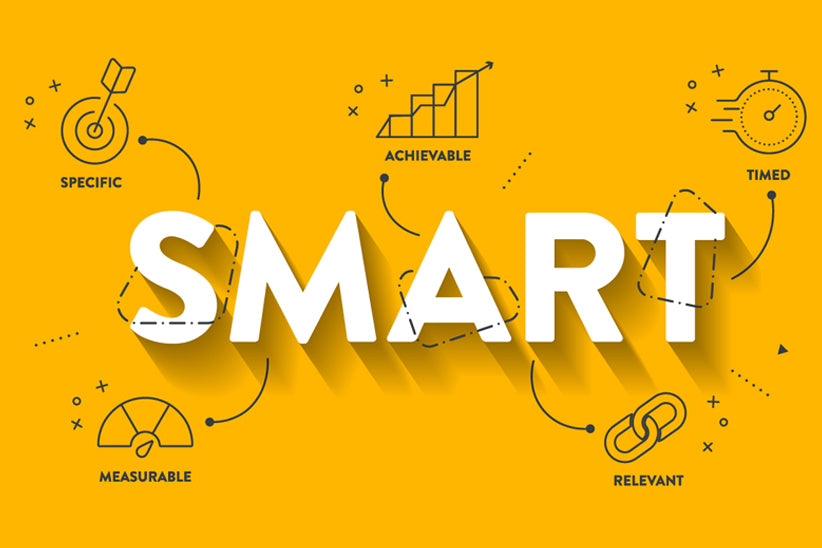
How to Create SMART Goals to Help with Weight Loss
Having a goal in mind is a great place to start when you begin your weight loss journey. But if your main focus is losing a specific amount of weight without having an actual plan, you could sabotage your journey before it even begins.
Instead of fixating solely on the weight you want to lose, try setting a SMART goal.
What is a SMART Goal?
A SMART goal is a framework for defining your objective with a goal that is Specific, Measurable, Achievable, Relevant, and Time-bound (SMART).
SMART goals will help you create a simple, action-based plan to turn your goal into a reality.
How to create a SMART Goal.
Make sure you address each of these aspects of your SMART goal:
Specific
Get as detailed as you can about your goal so you have a clear idea of what your process needs to be to make it happen.
For example, having a goal to ‘lose 20 pounds’ doesn’t have the same staying power as a goal to ‘eat three GOLO-friendly meals every day.’
Note how the weight-based goal only has the end result in mind. Whereas having a process goal helps you focus on a specific thing you need to do to lose weight. A goal works best when you know exactly what you will do, for how long, and when you will do it.
Measurable
The easier it is to measure a goal, the better you’ll be at determining if you succeeded. A goal to ‘exercise more’ is good in theory but isn’t easily measured. Whereas a goal to ‘walk 30 minutes, three days a week’ is measurable.
Achievable
Make sure your goal is realistic, meaning you have enough time and resources to achieve it.
For example, if you have a special event on the horizon that you’d like to lose weight for, make sure you give yourself enough time to do it in a healthy way.
Relevant
Set goals that are meaningful. Goals are meant for you, not what other people want from you. Think about what’s important to you in your life and set goals that align with your values. If weight loss is a priority for you, then you have a better chance of attaining your goal.
Time-bound
Once you have a goal, give it some added credence by creating a deadline. Having a time limit for your weight loss journey is a great way to motivate you to stay the course.
With a specific date or timeframe in mind, you add extra urgency to your goal to help you stay motivated.
More SMART goal examples that can improve your journey
- Add one extra serving of vegetables for dinner each night for a week.
- Prep GOLO-friendly breakfasts for the next five days.
- Create one new healthy recipe each week for the next month.
Why SMART goals can help you lose weight more effectively.
Setting SMART goals is a great way to improve your weight loss experience. They can help you create a more meaningful plan and shift your focus to behaviors and habits, not just a lofty number with no road map.
GOLO is not intended to diagnose, treat, prevent, or cure any illness or disease. This blog provides general information and discussion about health and wellness related subjects. The words and other content provided in this blog, and in any linked materials, are not intended and should not be construed as medical advice. GOLO encourages you to consult a doctor before making any health changes, especially any changes related to a specific diagnosis or condition. All opinions and articles linked to and from this page are those of the individuals concerned and do not necessarily represent those of GOLO, LLC or its employees. No responsibility can be accepted for any action you take or refrain from taking as a result of viewing this page. GOLO will not be liable for any errors, losses, injuries, or damages from the display or use of this information. These terms and conditions are subject to change without notice.
Tagged with: Tips & Tricks